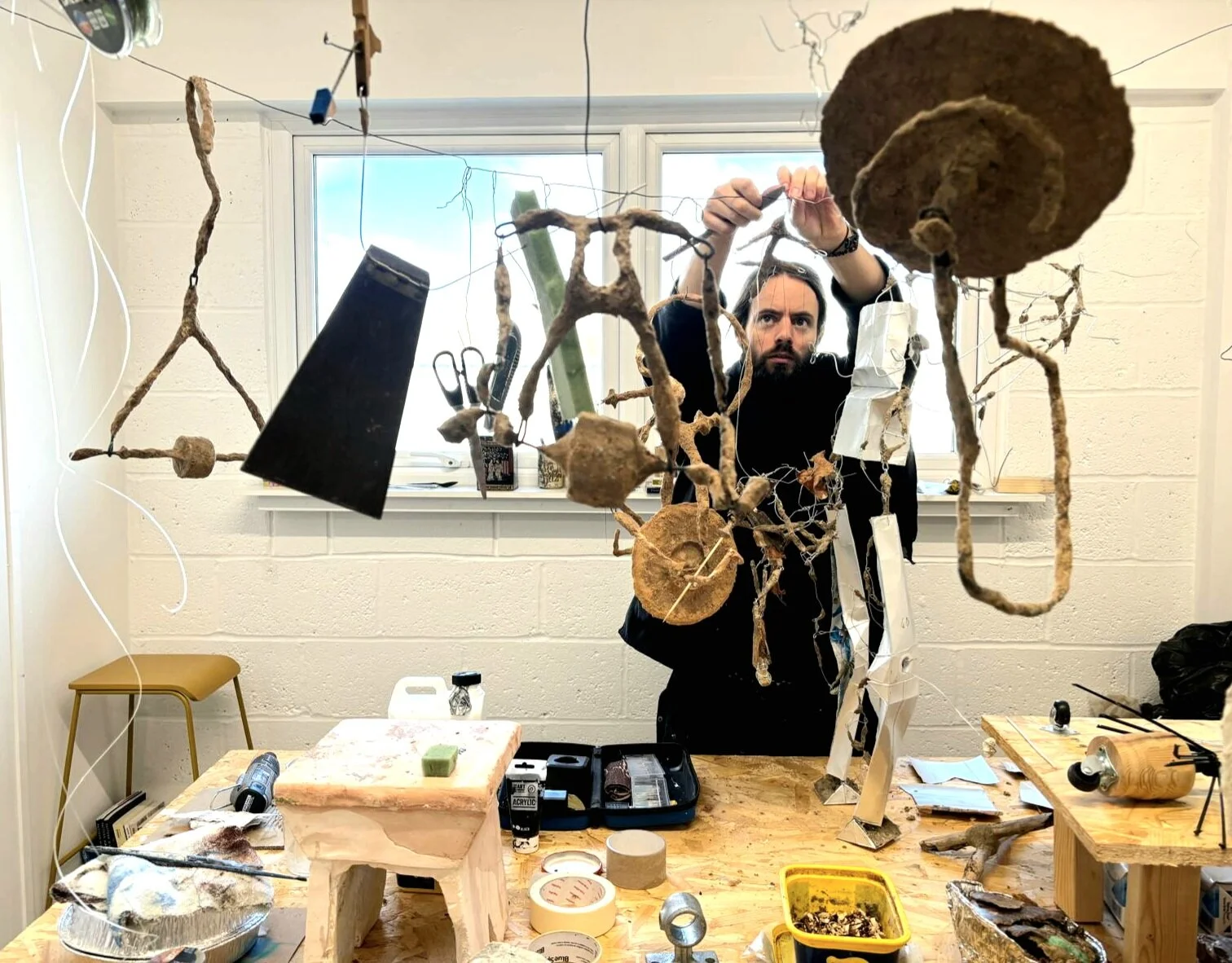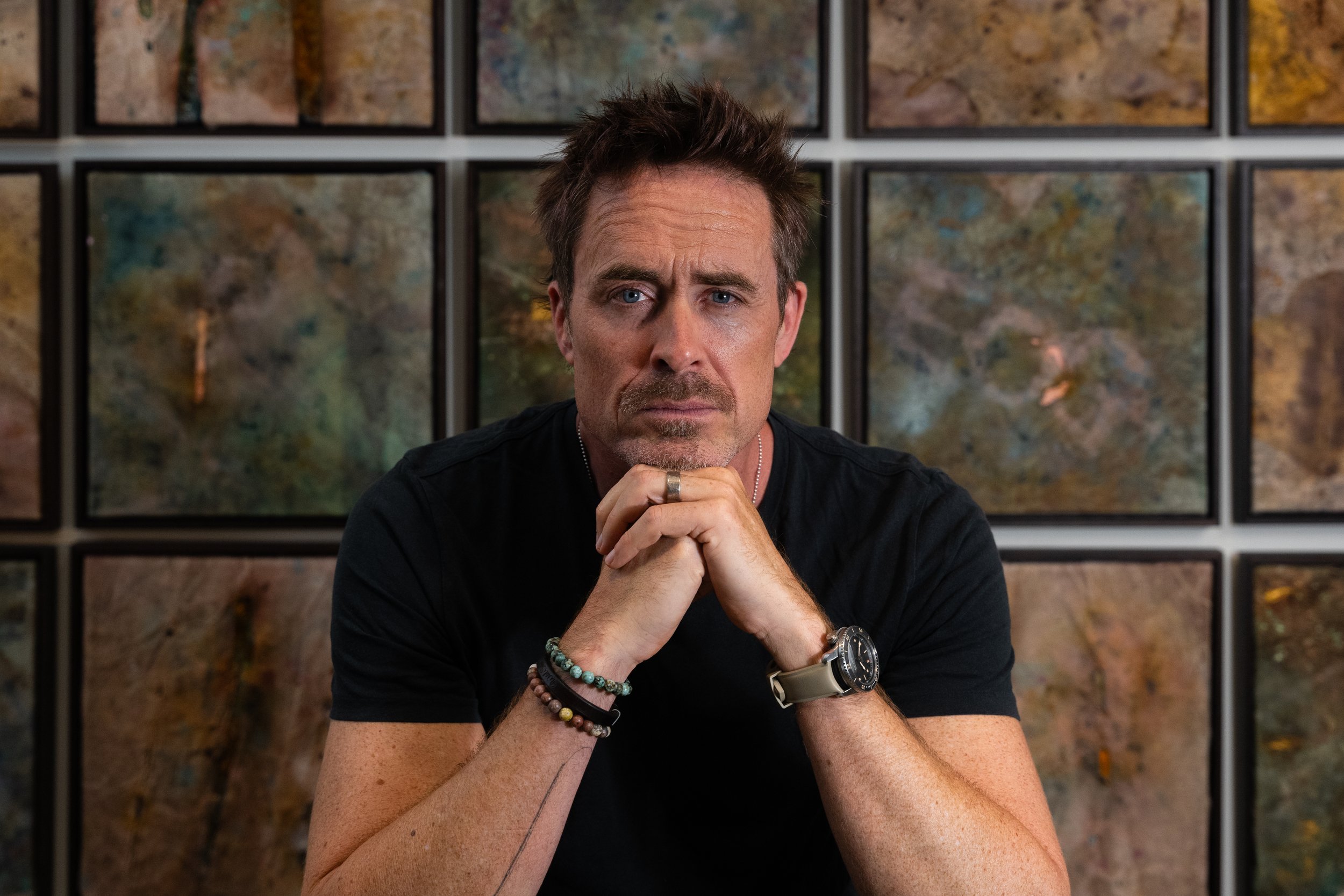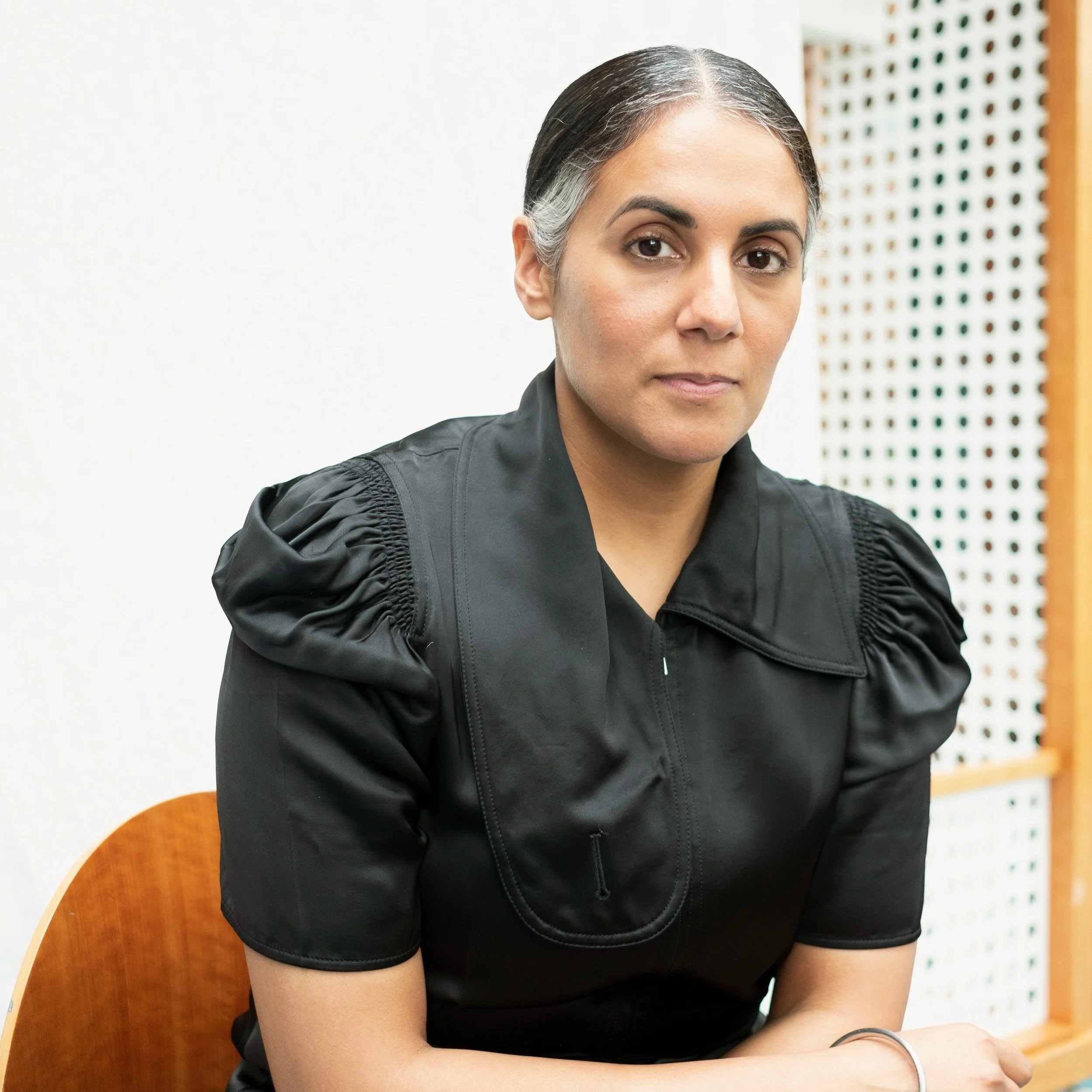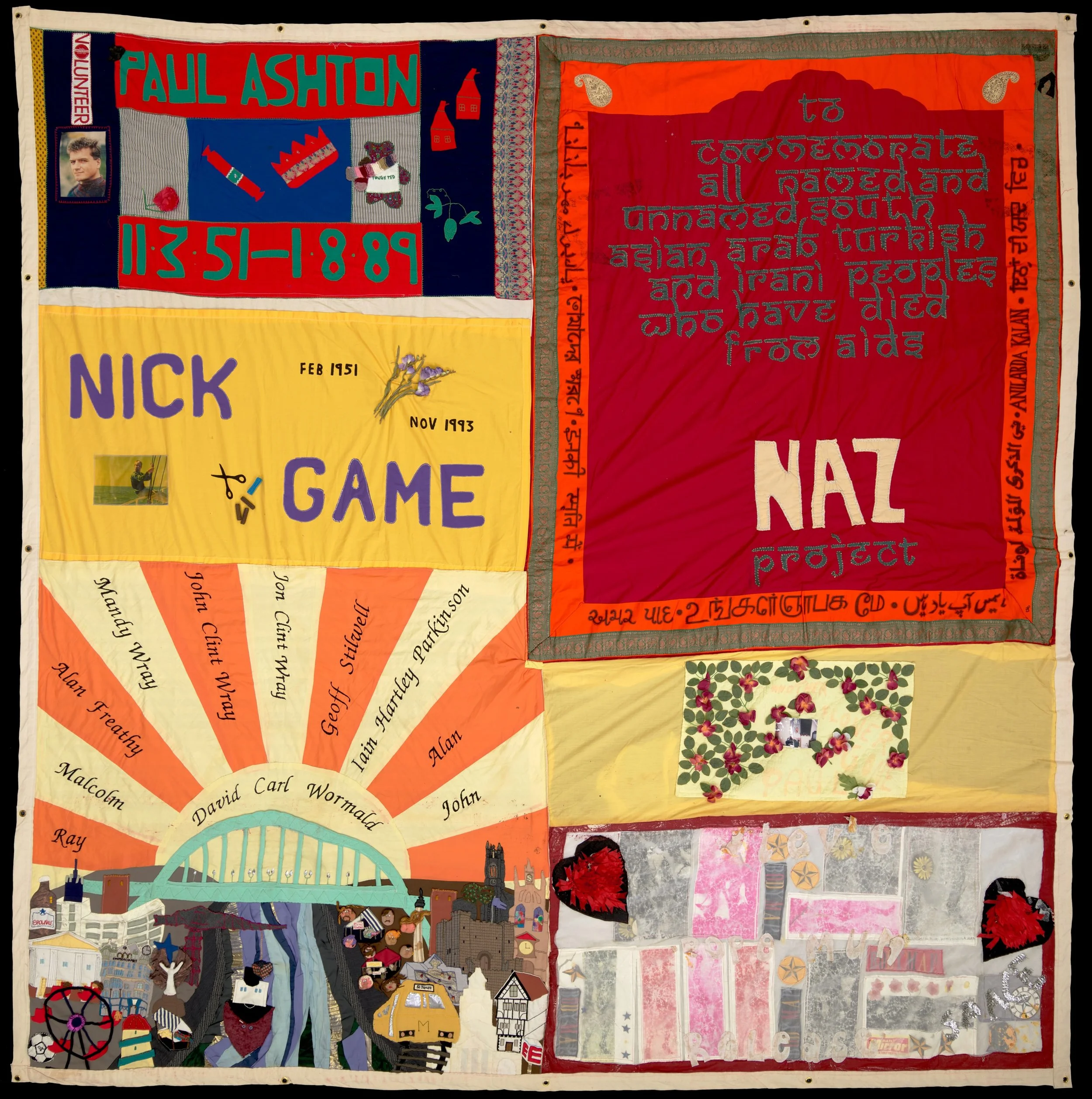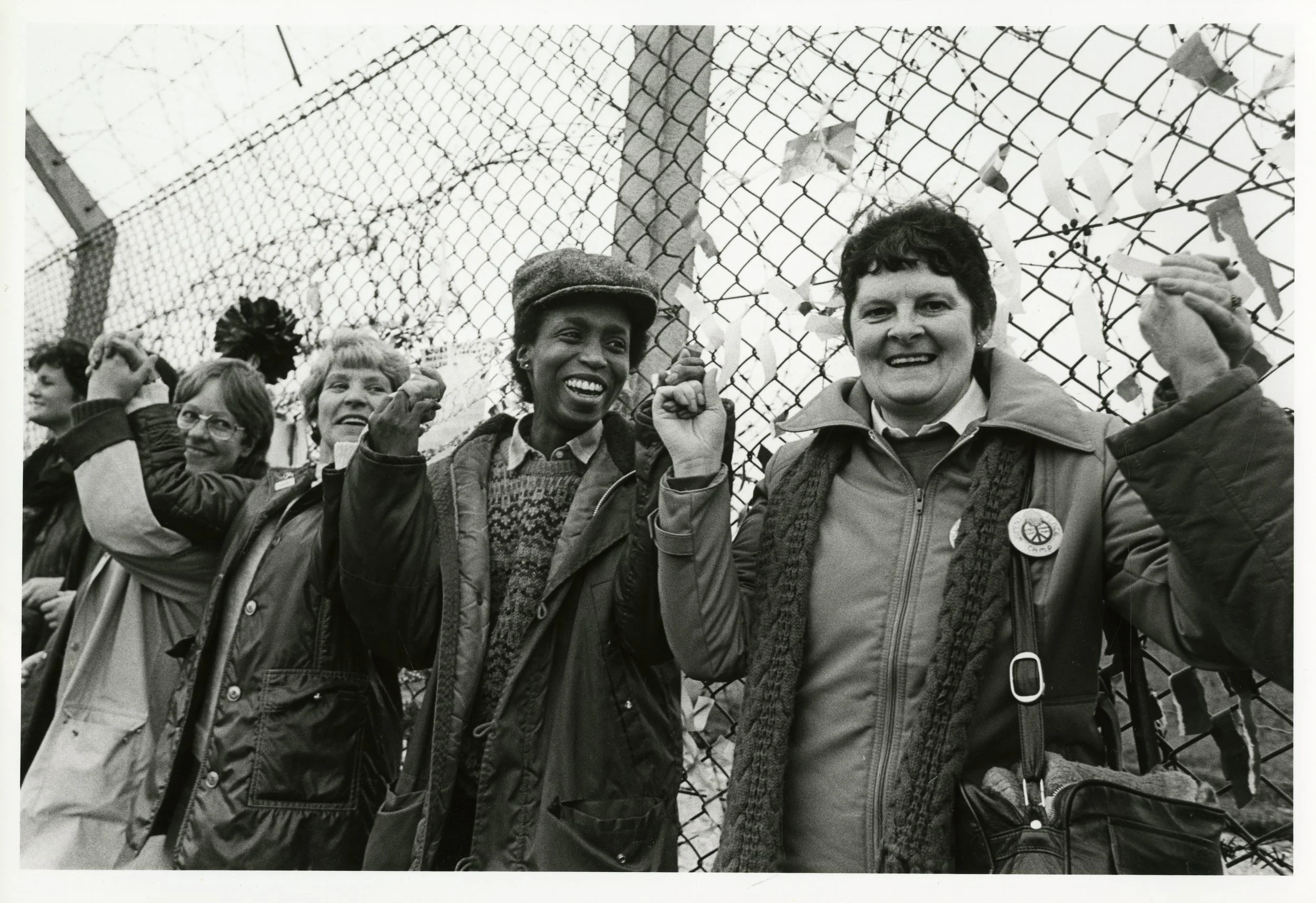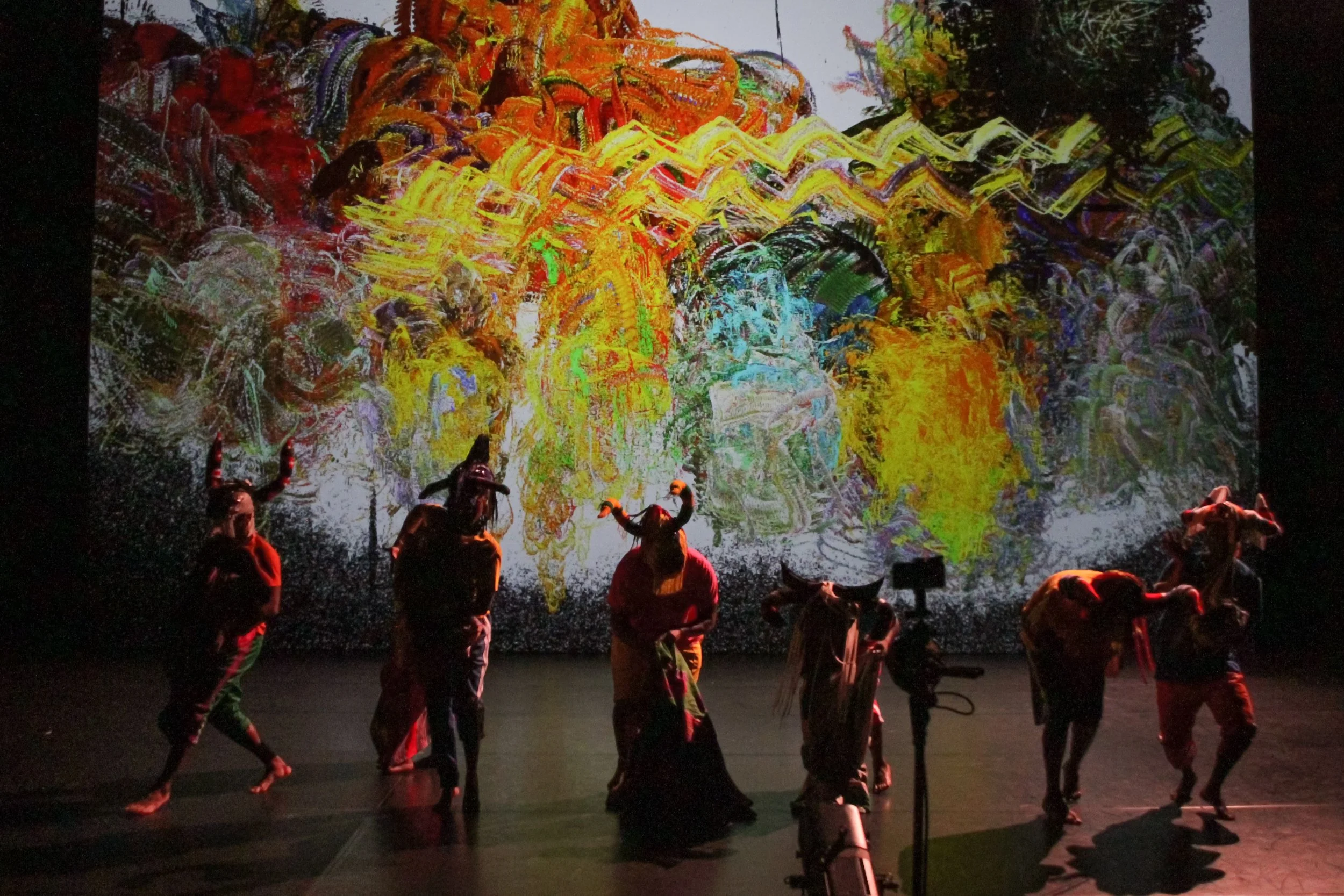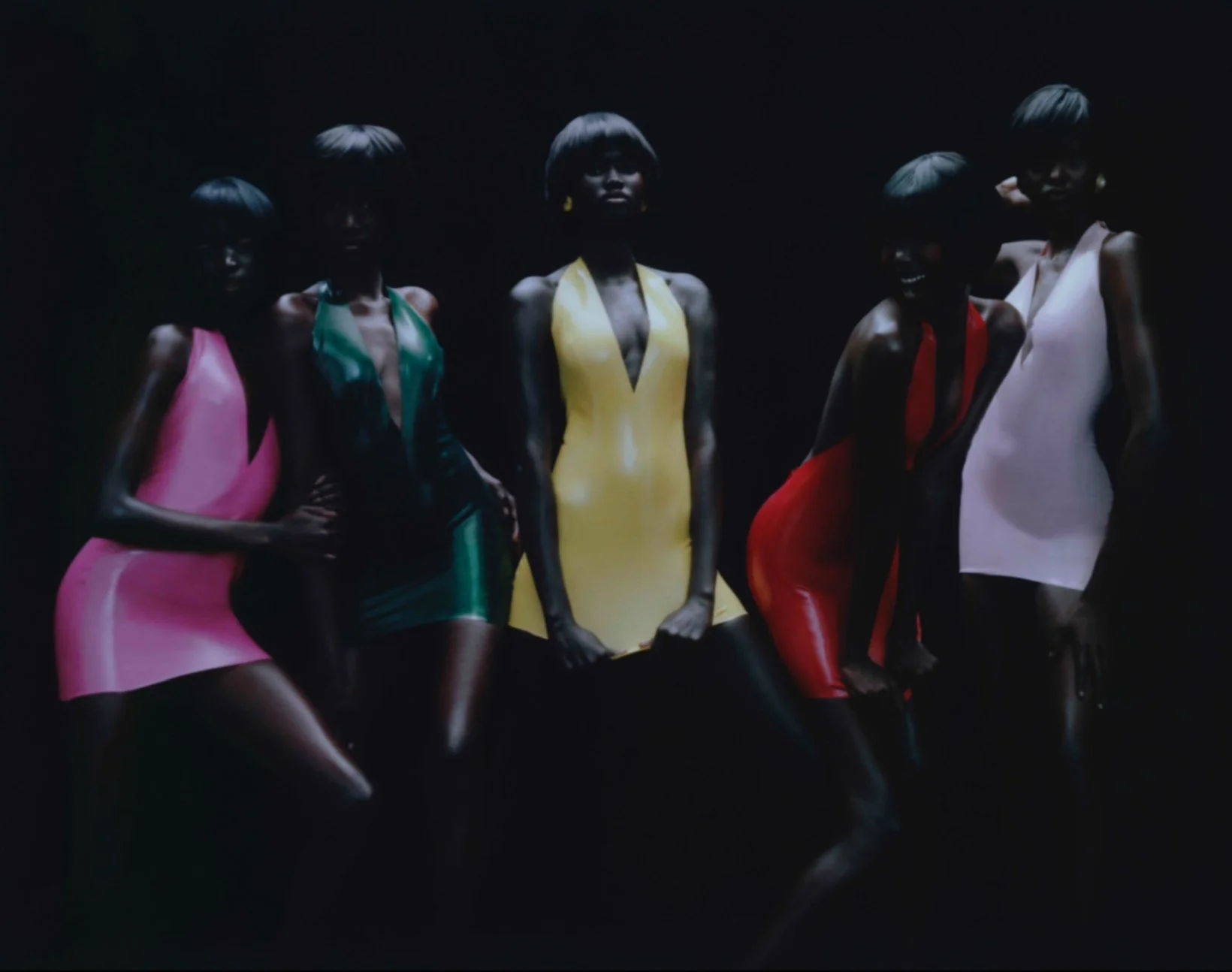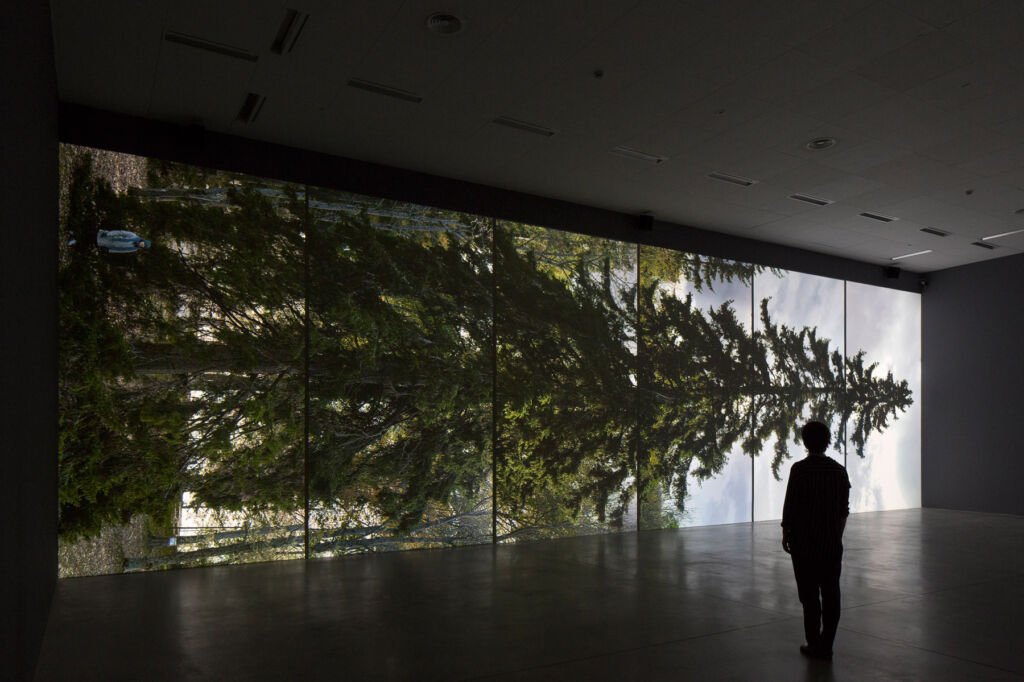In conversation with Youngju Joung
“Home to me means my hometown – it is warm, full of humanity, and symbolises safety and abundance.”
- Youngju Joung

Youngju Joung.
Youngju Joung’s paintings stand out for their quietness. They don’t so much shout as glow – quite literally in many cases, as the shanty village landscapes flicker with the golden light emanating from the windows of homes that stretch out into the horizon.
Though she now lives in Seoul, the South Korean artist is inspired by memories of her childhood town. A subject she would draw from a young age, capturing the sprawling urban scenes, it was on returning from Paris, where she studied Fine Art as a young adult, that she was enamoured once again. She returned home where she climbed Nam Mountain and saw the downtown of Seoul, lit at dusk. Combining this image of Seoul with the images of home from her mind, she now continues to create her unique cityscapes, stretching out beyond view with single storey homes and speckled with flickering lights that hint at a dense yet unseen human presence.
While her paintings are rooted in her remembered experiences, they are also symbolic of Korean society. The city or the hill village reflect poverty and affluence. The artful illumination of these spaces imbues the painted narrow streets, reclining walls and aged rooftops with authenticity; these spaces feel inherently lived-in, as if you could inhabit them yourself.
As much as these paintings are peacefully enchanting, they are also technically so unique. Youngju Joung creates her paintings by first crumpling and unfolding a traditional Korean paper called hanji, which is often used in homes to absorb warmth. By creasing, scratching and wrinkling the paper, the artist evokes a way of life that feels authentically dilapidated, used and reused; and yet it retains a distinctly warm and peaceful atmosphere. The medium itself has endured a wearing process, just as the buildings it presents.
These paintings do not beautify or exaggerate, they are honest representations of exposed bricks, slate rooftops and rusted gates. These homes are reflections of their humble occupants, dimly lit and ageing, we are absorbed into this world at a fleeting moment of natural beauty before darkness descends. At the centre of this peaceful transition lies a sacred domestic routine, where each light represents a life, faintly glowing amongst the hum of the living city.
Your exhibition at Almine Rech is titled Way Back Home – where was home for you as a child?
When I was young, my home was in the outskirts of Seoul. I was born in 1970 and Korea was poor at that time. Like the scenery in my painting, there were many shanty villages, side by side mixed with tile-roofed houses. That was where I was born. The villagers shared their affection, grew close, and lived hard. It was not a famous place, but a village where ordinary people lived together.
And is there an emotional feeling that to you defines the idea of ‘home’?
Home to me means my hometown – it is warm, full of humanity, and symbolises safety and abundance.

Installation view of Youngju Joung, 'Way Back Home', Almine Rech, London, 2024 / © Youngju Joung - Courtesy of the Artist and Almine Rech - Photo: Melissa Castro Duarte.
Some of your landscapes have a particular-coloured hue. Is there a reason behind these choices?
The colours are visually expressing the emotions I feel in each work. This also depends on the time, and the feel of the season.
Your most recent paintings are full of golden light. Is there a spiritual element to this? How long have you incorporated this feature and why is it important to you?
Gold is a colour that has been used for many reasons in the past, and was used here as a way to brighten the shabby shack with an element of hope. At one point when I was having a hard time, I looked at the shanty house and it looked like me. I wanted to give myself hope, so I started drawing on the subject of the shanty town in this way and drew light as a symbol of warm comfort and hope.
Please can you describe how you use hanji paper in your works? What is the process you employ and is there a deeper significance to why you use it (rather than any other type of paper, for example)?
My skills in using hanji have evolved little by little from 2008 to now. Hanji has the characteristic of absorbing light and emitting warmth, which is in line with the meaning of my work. I sketch on a canvas, crumple and unfold Korean paper on each side, cut it, paste it, carve it with a knife to make it one by one, dry it, and paint over the top.
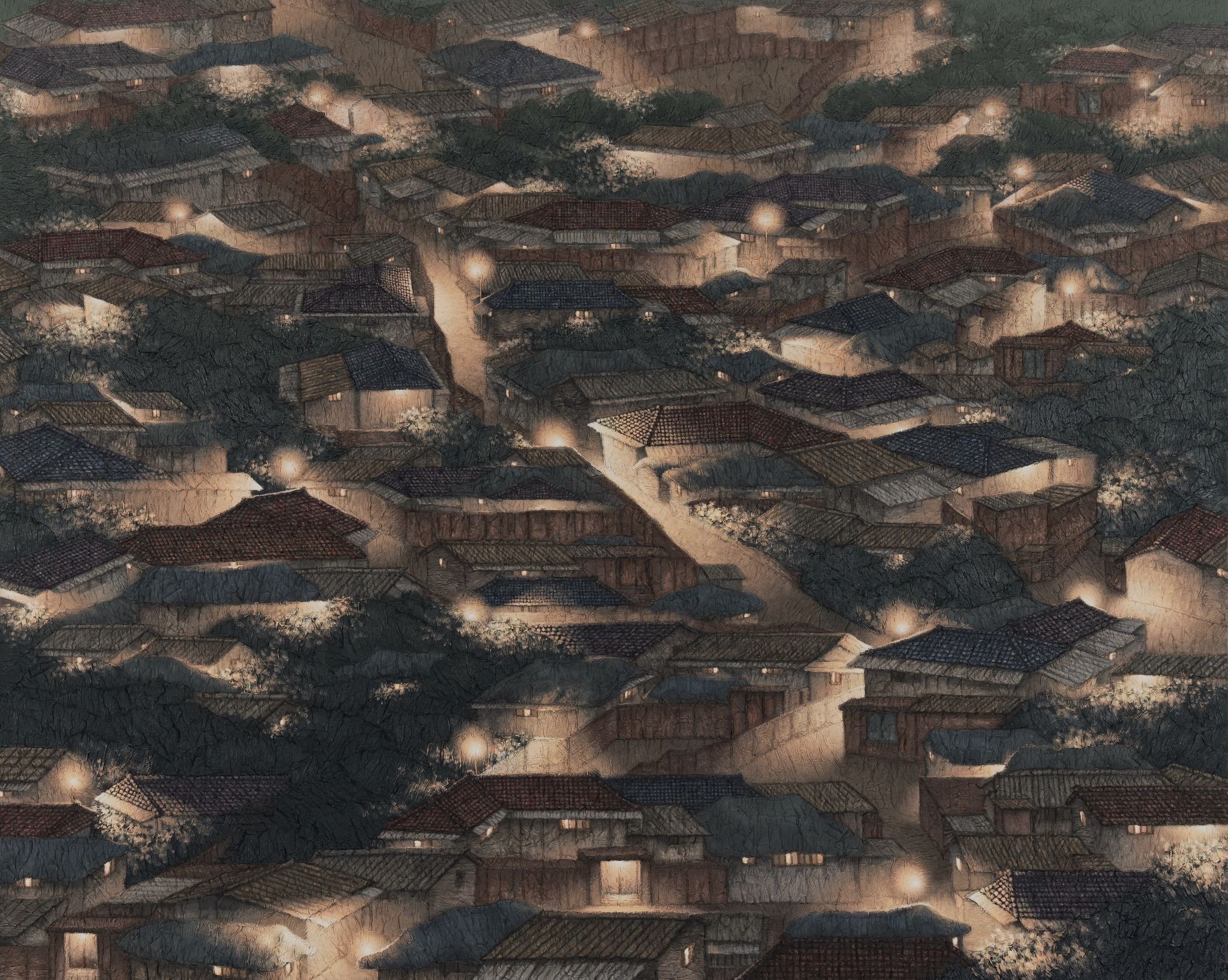
Youngju Joung, Way back home 917, 2024. Acrylic and hanji paper on canvas. 181.8 x 227.3cm / 71 1/2 x 89 1/2in © Youngju Joung - Courtesy of the Artist and Almine Rech. Photo: Hongsuk Kim.
And is there a reason why you never portray figures in your work?
People are like home to me. Because home is people for me. So each house represents the person himself.
How do you see your practice developing in the near future? What would be your dream project?
I plan to draw a landscape incorporating nature – with the idea that nature will also disappear, just like my hometown is disappearing. Of course, I will continue to use Korean paper…and the techniques will continue to evolve and change. Because I always like to study and explore.

Installation view of Youngju Joung, 'Way Back Home', Almine Rech, London, 2024 / © Youngju Joung - Courtesy of the Artist and Almine Rech - Photo: Melissa Castro Duarte.
And a quick fire 5:
Any upcoming projects of note that you can discuss?
We are considering a solo exhibition and museum exhibition in New York.
What have been the most rewarding moments of your career thus far?
When people say they are comforted by my paintings.
What’s the best advice you have ever received?
Don’t lose your warmth.
What do you love about London?
London is a place where the past and the present come together well. This is a very enviable point.
‘Way back home’ by Young ju Joung runs at Almine Reach London until 21 December 2024. alminerech.com
Daniel is a curator-producer dedicated to the social impact of the arts and cross-sector collaboration. He is currently Creative Director & Chief Executive of Old Diorama Arts Centre (ODAC) in Euston, where he has strengthened the centre’s community connections amidst urban transformation…
Peter Bellerby is the founder of Bellerby & Co. Globemakers, a company renowned for its exquisite hand-crafted globes. Established in 2010, the company specialises in meticulously designed pieces that showcase exceptional craftsmanship, positioning Bellerby & Co. as a leader in the globe-making industry…
Gabriele Beveridge is known for her sculptural and conceptual practice that combines materials as diverse as hand-blown glass, photo chemicals, and found images…
Robyn Orlin is a South African dancer and choreographer born in Johannesburg. Nicknamed in South Africa "a permanent irritation", she is well known for reflecting the difficult and complex realities in her country. Robyn integrates different media into her work (text, video, plastic arts) to she investigates a certain theatrical reality which has enabled her to find her unique choreographic vocabulary…
Katrina Palmer, an artist known for exploring materiality, absence, and dislocation, recently spoke to us following her year-long residency at the National Gallery about her exhibition The Touch Report…
Enej Gala is an artist who splits his time primarily between London and his hometown of Nova Gorica, Slovenia. A graduate of the Academy of Fine Arts in Venice and the Royal Academy Schools (2023), Gala first gained our attention with Neighbour’s Harvest, an installation that cleverly combined puppetry and conceptual art…
David Ottone is a Founding Member of Award-winning Spanish theatre company Yllana and has been the Artistic Director of the company since 1991. David has created and directed many theatrical productions which have been seen by more than two million spectators across 44 countries…
Darren Appiagyei is a London-based woodturner whose practice embraces the intrinsic beauty of wood, including its knots, cracks, bark, and grain. Highly inspired by Ghanaian wood carving, Darren explores raw textures and new woods in his work…
Huimin Zhang is an artist specialising in 22K gold, known for her innovative craftsmanship. She combines various cultural techniques, including filigree, engraving, and European gold and silver thread embroidery, to create unique works…
Akinola Davies Jr. is a BAFTA-nominated British-Nigerian filmmaker, artist, and storyteller whose work explores identity, community, and cultural heritage. Straddling both West Africa and the UK, his films examine the impact of colonial history while championing indigenous narratives. As part of the global diaspora, he seeks to highlight the often overlooked stories of Black life across these two worlds.
Hannah Drakeford is a London-based interior designer known for her bold and colourful interiors. She transitioned from a 21-year retail design career to interior design, and has gained popularity on social media where she now shares creative upcycling tutorials and encourages individuality in home decor…
Shula Carter is an East London-based creative with a background in contemporary, ballet, and modern dance. She trained at the Vestry School of Dance and later at LMA London, where she developed skills in commercial, hip hop, and tap dance, alongside stage and screen performance…
Dian Joy is a British-Nigerian interdisciplinary artist whose work delves into the intersections of identity, digital culture, and the fluid boundaries between truth and fiction. Her practice is rooted in examining how narratives evolve and shape perceptions, particularly in the digital age.
Dian Joy is a British-Nigerian interdisciplinary artist whose work delves into the intersections of identity, digital culture, and the fluid boundaries between truth and fiction. Her practice is rooted in examining how narratives evolve and shape perceptions, particularly in the digital age.
John-Paul Pryor is a prominent figure in London’s creative scene, known for his work as an arts writer, creative director, editor, and songwriter for the acclaimed art-rock band The Sirens of Titan…
Jim Murray is an actor, director, conservationist and artist known for Masters of Air (2024) and The Crown (2016). Murray first came to prominence as an artist in 2023 with his acclaimed inaugural exhibition In Flow, where his dynamic abstract paintings were hung in conversation with John Constable’s The Dark Sid…
Anthony Daley is an abstract expressionist painter known for his vibrant, large-scale works that explore beauty through intense colour and light. His art bridges the past and present, drawing inspiration from the Old Masters as well as diverse sources like literature, science, poetry, and nature.
Rachel Kneebone’s work explores the relationship between the body and states of being such as movement, stasis, and renewal. Through her porcelain sculptures, she examines transformation and metamorphosis, reflecting on what it means to inhabit the body and be alive…
Saff Williams is the Curatorial Director at Brookfield Properties, bringing over fifteen years of experience in the arts sector…
Sam Borkson and Arturo Sandoval III, the acclaimed LA-based artists behind the renowned collective "FriendsWithYou," are the creative minds behind "Little Cloud World," now on display in Covent Garden. During their recent visit to London, we had the privilege of speaking with them about their creative process and the inspiration behind this captivating project.
Kinnari Saraiya is a London-based Indian artist, curator, and researcher whose work focuses on trans-altern and post-humanist ideas from the Global South. She is currently a curator at Somerset House and has held positions at the Baltic Centre for Contemporary Art, Frieze Art Fair, and Bowes Museum....
Fusing her Asian roots with a fascination for African pattern work and her deep passion for architectural geometry, Halima’s work is intense yet playful, structured yet creative; substantial yet dynamic and invariably compelling in its originality.
Matilda Liu is an independent curator and collector based in London, with a collection focusing on Chinese contemporary art in conversation with international emerging artists. Having curated exhibitions for various contemporary art galleries and organisations, she is now launching her own curatorial initiative, Meeting Point Projects.
EKLEIDO, a choreographic duo formed by Hannah Ekholm and Faye Stoeser, choreograph performances for live shows and film.
Lydia Smith is one to watch. Currently on show in three different places across London, her work can be seen in a solo exhibition in the City, a group show in a chapel in Chelsea and through a new series of monumental sculptures installed outdoors across sprawling parkland…
Taipei-based IT entrepreneur Elsa Wang is the founder of Bluerider ART, a progressive gallery at the intersection of art and technology.
Jemma Powell is known for her observational landscapes. She is also an accomplished actress having featured in Tim Burton’s Alice in Wonderland…
Suzanna Petot, originally from New York, is a curator and writer based in London. She holds an MA in Curating the Art Museum from The Courtauld Institute of Art and has worked at various institutions in the U.S., Italy, and the UK, including Gallerie delle Prigioni, The Courtauld Gallery, Tate Modern, M.I.T List Center for Visual Art, and the Metropolitan Museum of Art…
Deep K Kailey boasts a highly successful career in the fashion industry, having made significant contributions to renowned publications such as Dazed, Vogue, and Tatler. However, driven by a quest for deeper meaning in life, she embarked on a transformative spiritual journey. This path ultimately led her to establish one-of-a-kind arts organisation Without Shape Without Form (WSWF)….
Elli Jason Foster and Millie Jason Foster are the dynamic co-directors behind Gillian Jason Gallery. This groundbreaking gallery is the first of its kind in the UK, wholly committed to celebrating female artists…
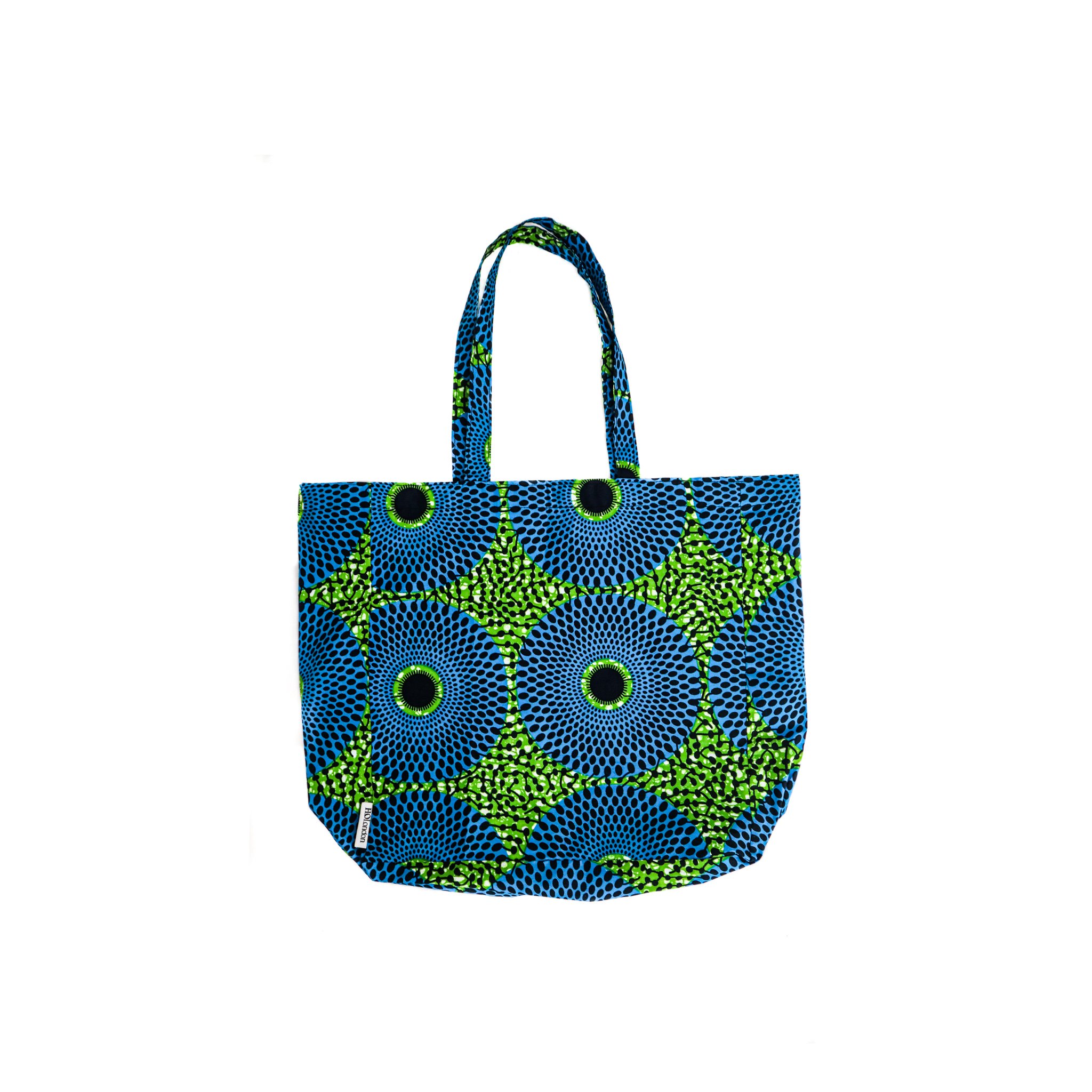
Tate will offer visitors a rare opportunity to view the UK AIDS Memorial Quilt in its Turbine Hall from 12 to 16 June 2025. The quilt, which began in 1989, consists of 42 quilts and 23 individual panels representing 384 individuals affected by HIV and AIDS…
Rosie Kellett debut cookbook, In for Dinner by , set for release on 1 May 2025 and available for pre-order now, is a heartfelt and practical guide to everyday cooking. Drawing on her own experiences of moving to London alone…
Discover what’s happening in London from 21–27 April, with major events including the new Multitudes arts festival at Southbank Centre, Brick Lane Jazz Festival, and the London Marathon…
What’s On in London This Week: Discover rooftop games at Roof East, cherry blossoms at the Horniman Gardens, and Easter fun at Hampton Court Palace. Plus, catch Loraine James live, Dear England at the National Theatre, and jazz nights at Ladbroke Hall…
London is set to showcase a rich and varied programme of art exhibitions this May. Here is our guide to the art exhibitions to watch out for in London in May…
With summer around the corner, what better way to spend a sunny day than by enjoying art, culture, and a bit of al fresco dining? Whether you’re looking for a peaceful spot to reflect on an exhibition or simply want to enjoy a light meal in the fresh air, here’s our guide to some of the best museum and gallery cafés with outdoor terraces in London….
As summer arrives in London, there’s no better time to embrace the city’s vibrant outdoor dining scene. Here is our guide to the best outdoor terraces to visit in London in 2025 for an unforgettable al fresco experience…
Wildlife Photographer of the Year 2025 · Gabriel Moses: Selah · Eileen Perrier: A Thousand Small Stories · Dianne Minnicucci: Belonging and Beyond · Linder: Danger Came Smiling · The Face Magazine: Culture Shift · Cecil Beaton’s Fashionable World · Deutsche Börse Photography Foundation Prize 2025 · Photo London 2025 · Taylor Wessing Photo Portrait Prize · Nature Study: Ecology and the Contemporary Photobook · Flowers – Flora in Contemporary Art & Cultur…
This April, Ladbroke Hall’s renowned Friday Jazz & Dinner series returns, showcasing an impressive roster of artists at its Sunbeam Theatre. Each evening pairs exceptional live jazz with a carefully crafted menu from the award-winning Pollini restaurant…
Holly Blakey: A Wound with Teeth & Phantom · Kit de Waal: The Best of Everything · Skatepark Mette Ingvartsen · Spring Plant Fair 2025 · Hampton Court Palace Tulip Festival 2025 · Loraine James – Three-Day Residency · Jan Lisiecki Plays Beethoven · Carmen at The Royal Opera House · Cartier Exhibition · The Carracci Cartoons: Myths in the Making · Nora Turato: pool7 · Amoako Boafo: I Do Not Come to You by Chance · Bill Albertini: Baroque-O-Vision Redux…
Robyn Orlin had her first encounter with the rickshaw drivers of Durban at the young age of five or six, an experience that left such a deep impression on her that she later sought to learn more about their fate. Rickshaws were first introduced to Durban in 1892…
Murder She Didn’t Write is misbehaviour live on stage peppered with self-awareness and unbelievably good writing. This isn't a fad, this isn't sloppy - it’s naughty and scathingly witty…
Gagosian presents I Do Not Come to You by Chance, a powerful solo exhibition by Amoako Boafo at their Grosvenor Hill gallery this April 2025…
TOZI, derived from the affectionate Venetian slang for “a close-knit group of friends,” is the brainchild of an Italian trio that met while opening Shoreditch House under the Soho House Group. In 2013, Chef Maurilio Molteni, fresh from his time as Head Chef at Shoreditch House and developing the menu at Cecconi’s, opened the first TOZI restaurant in London…
Multitudes at Southbank Centre will reimagine live music through bold collaborations across dance, theatre, and visual arts…
Multitudes Festival · Ed Atkins, Tate Britain · Brick Lane Jazz Festival · Teatro La Plaza’s Hamlet · Holly Blakey: A Wound with Teeth & Phantom · Roof East · Hampton Court Palace Tulip Festival 2025 · London Marathon 2025 · ROOH – Within Her · Sultan Stevenson Presents El Roi · Carmen at The Royal Opera House · The Big Egg Hunt 2025 · Architecture on Stage: New Architects · The Friends of Holland Park Annual Art Exhibition 2025
Autumn 2025 will bring two exciting exhibitions to the Barbican: ‘Dirty Looks’, a bold fashion exhibition exploring imperfection and decay, and an innovative art installation by Lucy Raven in The Curve…
Robyn Orlin: We wear our wheels with pride · Architecture on Stage: Lütjens Padmanabhan · Jay Bernard: Joint · Black is the Color of My Voice · Joe Webb Trio · Rhodri Davies at Cafe OTO · Sunday Times Young Writer of the Year Award 2025 · Lyon Opera Ballet: Cunningham Forever · AVA London · Sister Midnight · Astonishing Things: The Drawings of Victor Hugo · Eunjo Lee · Arpita Singh: Remembering · Fiona Banner aka The Vanity Press: Disarm · Bunhead Bakery · Time & Talents
Looking for something truly special this Mother’s Day? There are a variety of unique gifts and experiences to take advantage of in London, whether your mother loves exploring world-class art galleries and museum exhibitions, wandering through historic homes filled with fascinating stories and remarkable collections, indulging in a luxurious spa treatment, or enjoying an unforgettable dining experience..
After 18 successful years at Edinburgh Fringe, The Big Bite Size Show arrives in London for the first time at The Pleasance Theatre, no less. A gem of a place for fringe theatre in London…
180 Studios will present the largest showcase of photographer and filmmaker Gabriel Moses’ work to date, featuring over 70 photographs and 10 films in March…
Cartier Exhibition at the V&A · Giuseppe Penone: Thoughts in the Roots · Antony Gormley: WITNESS · Richard Wright at Camden Art Centre · The Carracci Cartoons: Myths in the Making · Eileen Perrier: A Thousand Small Stories · Ed Atkins at Tate Britain · Richard Hunt: Linear Peregrination · Nolan Oswald Dennis at Gasworks · Nora Turato: pool7 · In House: Ree Bradley and Pete Gomes at Studio Voltaire…
The Shirley Sherwood Gallery of Botanical Art at Kew Gardens will showcase new botanical works, cinematic installations, and the connections between artists and trees…
Orchid Festival · Alice Sara Ott: John Field & Beethoven · Our Mighty Groove at Sadler’s Wells East · Seth Troxler at Fabric · North London Laughs – A Charity Comedy Night · London Symphony Orchestra: Half Six Fix – Walton · In Focus: Amir Naderi · Artist Talk: Citra Sasmita - Into Eternal Land · Noah Davis at Barbican · Theaster Gates: 1965: Malcolm in Winter: A Translation Exercise · Ai Weiwei: A New Chapter · Galli: So, So, So · Somaya Critchlow: The Chamber
The Cinnamon Club had completely flown under the radar for me. It is in a pocket of London I rarely visit, and even if I did, the building’s exterior gives little indication of what’s inside. But now that I’ve discovered it, I already have plans to return with my husband - and in my mind, a list of friends I would recommend it to…
An important exhibition has opened at the National Gallery co-organised with the Metropolitan Museum of Art. The Mayor of Siena, Nicoletta Fabio was in attendance on opening day to mark the exhibitions significance. Normally a major exhibition would take two to three years to come to fruition, in this instance, it has been in the making for eight year…
Máret Ánne Sara to create 2025 Hyundai Commission as Tate and Hyundai extend partnership to 2036.






